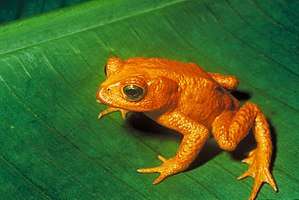Not evaluated
A not evaluated (NE) species is one which has been categorised under the IUCN Red List of threatened species as not yet having been assessed by the International Union for Conservation of Nature.[1][2]
| Conservation status | |
|---|---|
 | |
| Extinct | |
| Threatened | |
| Lower Risk | |
Other categories | |
| |
Related topics
| |
 Comparison of Red list classes above and NatureServe status below  | |
This conservation category is one of nine IUCN threat assessment categories for species to indicate their risk of global extinction. The categories range from 'extinct' (EX) at one end of the spectrum, to 'not evaluated' (NE) at the other.[3]
The category of 'not evaluated' does not indicate that a species is not at risk from extinction, but simply that the species has not yet been studied for any risk to be quantified and published. The IUCN advises that species categorised as 'not evaluated' "...should not be treated as if they were non-threatened. It may be appropriate . . . to give them the same degree of attention as threatened taxa, at least until their status can be assessed.".[3]:7[4]:76
By 2015 the IUCN had assessed and allocated conservation statuses to over 76,000 species worldwide. From these it had categorised some 24,000 species as globally threatened at one conservation level or another. However, despite estimates varying widely as to the number of species existing on Earth (ranging from 3 million up to 30 million), this means the IUCN's 'not evaluated' (NE) category is by far the largest of all nine extinction risk categories.[5]
Other applications
The global IUCN assessment and categorisation process has subsequently been applied at country and sometimes at regional levels as the basis for assessing conservation threats and for establishing individual Red Data lists for those areas.[6][7][8][9][10][11]
Assessment criteria have also begun to be applied as a way of categorising threats to ecosystems, with every ecosystem falling into the IUCN category 'not evaluated' prior to the start of the assessment process.[12]
Notes and references
- About the IUCN Red List.
- Walker, Timothy (2013). Plant Conservation: Why It Matters and How It Works. Timber Press. p. 80. ISBN 9781604692600. Retrieved 24 July 2018.
- IUCN Red List Categories and Criteria: Version 3.1 (PDF) (2nd ed.). Gland, Switzerland and Cambridge, UK. 2012. ISBN 978-2-8317-1435-6.
- "Guidelines for Using the IUCN Red List Categories and Criteria. Version 13" (PDF). IUCN Standards and Petitions Subcommittee. 2017. Retrieved 24 July 2018.
- "Wildlife Conservation Resource" (PDF). Marwell Zoo. Retrieved 23 July 2018.
- MILLER, REBECCA M.; RODRÍGUEZ, JON PAUL; ANISKOWICZ-FOWLER, THERESA; BAMBARADENIYA, CHANNA; BOLES, RUBEN; EATON, MARK A.; GÄRDENFORS, ULF; KELLER, VERENA; MOLUR, SANJAY (June 2007). "National Threatened Species Listing Based on IUCN Criteria and Regional Guidelines: Current Status and Future Perspectives". Conservation Biology. 21 (3): 684–696. doi:10.1111/j.1523-1739.2007.00656.x. ISSN 0888-8892. PMID 17531047.
- "Threatened Species Programme | SANBI Red List of South African Plants". redlist.sanbi.org. Retrieved 2018-07-24.
- Government, Northern Territory (2017-07-24). "Classification of wildlife". nt.gov.au. Retrieved 2018-07-24.
- "The National Red List 2012 of Sri Lanka Conservation Status of the Fauna and Flora" (PDF). Ministry of Environment, Colombo, Sri Lanka. 2012. Retrieved 24 July 2018.
- Hilton-Taylor, C. (1997). "Red Data List of southern African plants. 2. Corrections and additions". Bothalia. 27.2: 205.
- W., Duckworth, J.; G., Batters; L., Belant, J.; L., Bennett, E.; J., Brunner; J., Burton; S., Challender, D. W.; V., Cowling; N., Duplaix (2012-08-23). "Why South-east Asia should be the world's priority for averting imminent species extinctions, and a call to join a developing cross-institutional programme to tackle this urgent issue". S.A.P.I.EN.S. Surveys and Perspectives Integrating Environment and Society (5.2). ISSN 1993-3800.
- Rodrıguez, Jon Paul; Keith, David A.; Rodrıguez-Clark, Kathryn M.; et al. (2015). "A practical guide to the application of the IUCN Red List of Ecosystems criteria" (PDF). Royal Society. p. 3. Retrieved 24 July 2018.
